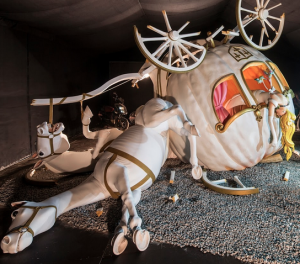Start here: Money and Banking
27th September 2015
Money exists like any other commodity – it may be bought and sold on the ‘money markets’ with interest charged as the price of money (or the reward for lending it). Except for one thing: money doesn’t really exist.
Most money, notes and coin excepted, is just an adjustment of figures on people’s accounts (see handout). Surprising as it may seem, there are no gold bars or anything else of value backing up the pound in your pocket or anywhere else.
It has value simply because it buys things or represents purchasing power. This is fine, except when all of us arrive outside Northern Rock bank in 2008 asking for our deposits back (see Case Study). If that happens, the bank concerned goes bust : it has lent our deposits on and has insufficient reserves of cash or liquid assets to pay all of us at once (see handout and powerpoint). So money and banking operates by faith: if we believe in its value (and their credibility) then the system functions just fine: if it breaks down, as in Germany in the 1930s and almost in the UK in 2008, then something very serious will result.
The Government has means at its disposal to control the money supply, influencing the (since 1997) independent Bank of England which engages in open market operations (these days called Quantitative easing) to affect the supply of money (see handout).
These days the Chancellor sets the framework and the Bank enacts it. Also independent, the Monetary Policy Committee fixes the rate of interest (the base rate) which affects the whole structure of lending rates in the inter-bank market (see handout). The rate of interest critically affects the demand for loans (both mortgages and business and personal loans). And through the Treasury, the Government issues both short-term and long-term government stock (sometimes called gilts). It is worth trying to understand how this series of arrangements and relationships – Treasury, Bank of England, Chancellor of the Exchequer, actually works. Read George Osbourne’s letter to George Carney (Governor of the Bank) for yourself, and also meditate on Labour Chancellor Alister Darling’s account of how he had just six hours to save the UK banking system in 2008 (here).
Monetary Policy is not quite what it used to be.
Image: Cinderella in Dismaland


0 Comments